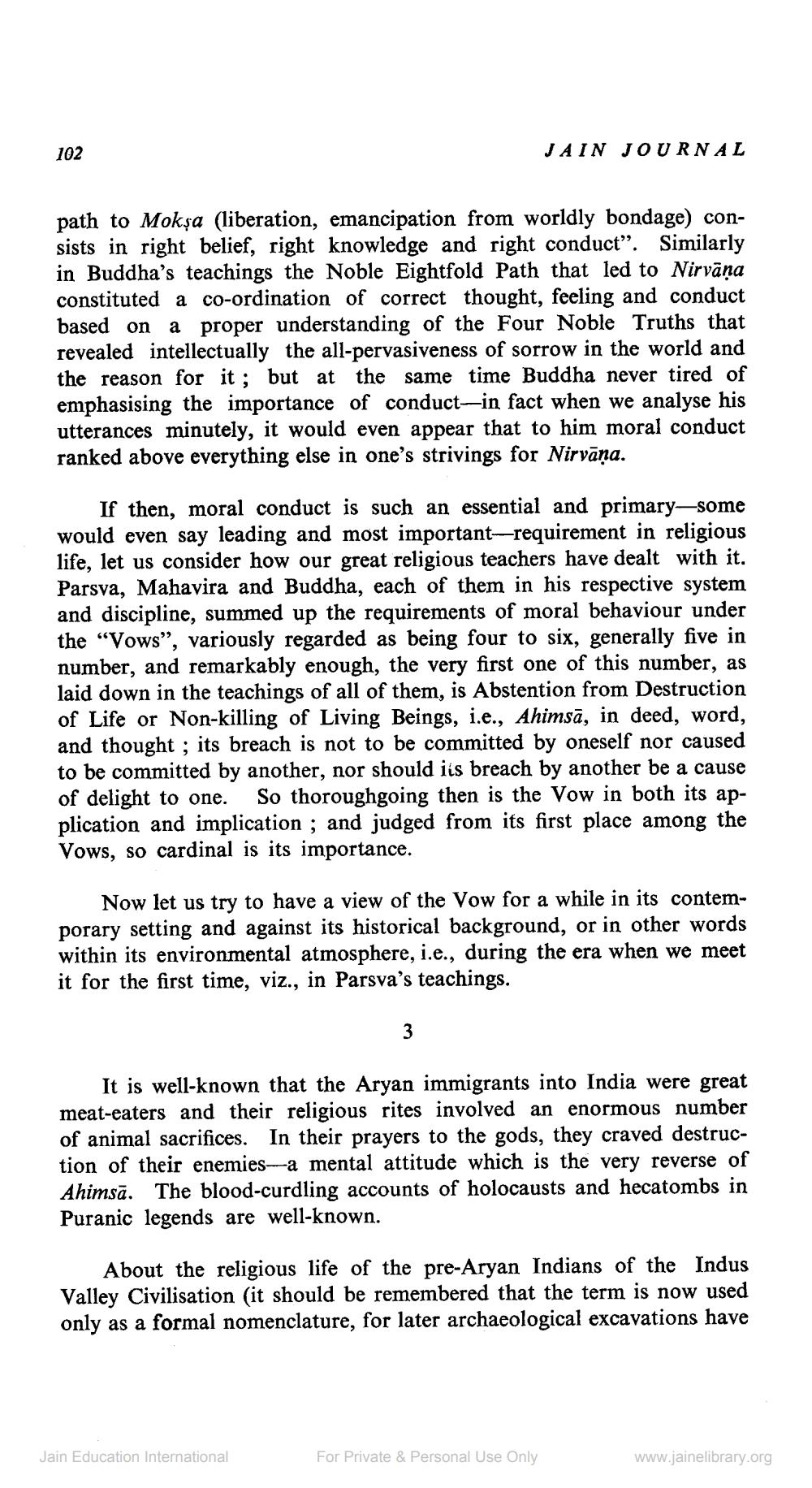Book Title: Jain Journal 1971 01 Author(s): Jain Bhawan Publication Publisher: Jain Bhawan Publication View full book textPage 8
________________ 102 JAIN JOURNAL path to Mokşa (liberation, emancipation from worldly bondage) consists in right belief, right knowledge and right conduct". Similarly in Buddha's teachings the Noble Eightfold Path that led to Nirvana constituted a co-ordination of correct thought, feeling and conduct based on a proper understanding of the Four Noble Truths that revealed intellectually the all-pervasiveness of sorrow in the world and the reason for it ; but at the same time Buddha never tired of emphasising the importance of conduct-in fact when we analyse his utterances minutely, it would even appear that to him moral conduct ranked above everything else in one's strivings for Nirvāṇa. If then, moral conduct is such an essential and primary—some would even say leading and most important-requirement in religious life, let us consider how our great religious teachers have dealt with it. Parsva, Mahavira and Buddha, each of them in his respective system and discipline, summed up the requirements of moral behaviour under the “Vows”, variously regarded as being four to six, generally five in number, and remarkably enough, the very first one of this number, as laid down in the teachings of all of them, is Abstention from Destruction of Life or Non-killing of Living Beings, i.e., Ahimsā, in deed, word, and thought ; its breach is not to be committed by oneself nor caused to be committed by another, nor should its breach by another be a cause of delight to one. So thoroughgoing then is the Vow in both its application and implication ; and judged from its first place among the Vows, so cardinal is its importance Now let us try to have a view of the Vow for a while in its contemporary setting and against its historical background, or in other words within its environmental atmosphere, i.e., during the era when we meet it for the first time, viz., in Parsva's teachings. It is well-known that the Aryan immigrants into India were great meat-eaters and their religious rites involved an enormous number of animal sacrifices. In their prayers to the gods, they craved destruction of their enemies a mental attitude which is the very reverse of Ahimsā. The blood-curdling accounts of holocausts and hecatombs in Puranic legends are well-known. About the religious life of the pre-Aryan Indians of the Indus Valley Civilisation (it should be remembered that the term is now used only as a formal nomenclature, for later archaeological excavations have Jain Education International For Private & Personal Use Only www.jainelibrary.orgPage Navigation
1 ... 6 7 8 9 10 11 12 13 14 15 16 17 18 19 20 21 22 23 24 25 26 27 28 29 30 31 32 33 34 35 36 37 38 39 40 41 42 43 44 45 46 47 48 49 50 51 52 53 54
